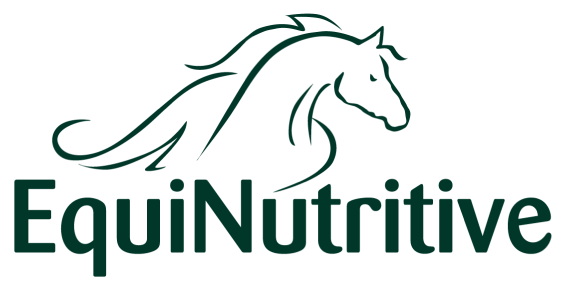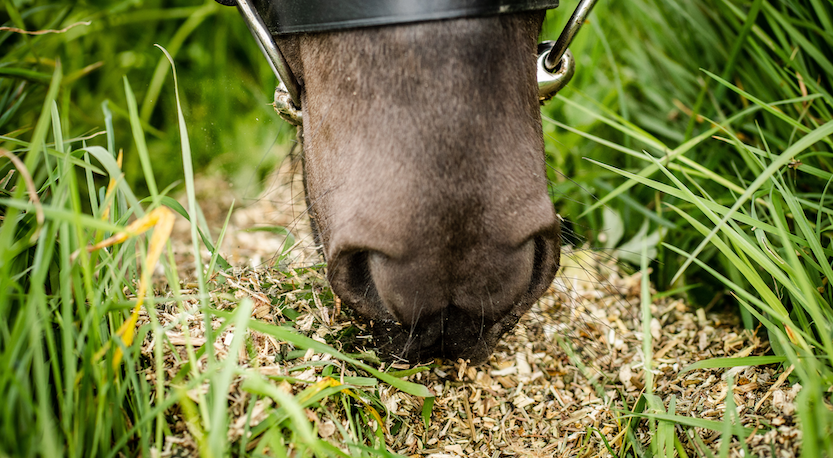Is your horse over excited and easily spooked?
Do you find your horse hot or excitable? Do they seem to have bottomless pits of energy and are making your riding sessions less enjoyable? Did you know one of the most common causes of over excited and spooky behaviour in your horse can be as a result of excess energy being provided by the diet? One of the most important considerations of feeding is to feed according to workload.
Many horse owners actually over estimate their horses’ current work load and are therefore over supplying energy in the diet. This handy table published by the National Research Council (2007) defines each work load and is a convenient way for owners to determine their horse's actual work load.
How To Define Your Horse's Workload:
|
Workload Category |
Average Heart Rate |
Exercise Description |
Type of Exercise |
|
Light |
80 bpm |
1-3 hours per week; 40% walk, 50% trot, 10% canter |
Recreational riding Beginning of training programmes Show horses (occasional) |
|
Moderate |
90 bpm |
3-5 hours per week; 30% walk, 55% trot, 10% canter, 5% low jumping, cutting or other skill work |
School horses Recreational riding Beginning or training/breaking process Show horses (frequent) Polo |
|
Heavy |
110 bpm |
4-5 hours per week; 20% walk, 50% trot, 15% canter, 15% gallop, jumping or other skill work |
Ranch work Polo Show horses (very frequent) Low-medium level eventing Race training (middle stages) |
|
Very Heavy |
110-115 bpm |
Ranges from 1 hour per week of speed work to 6-12 hours per week slow work |
Racing (Quarter horse, Thoroughbred, Standardbred) Endurance Elite 3-day eventing |
Ingredients To Avoid To Prevent A Heating Effect:
Molasses is a by-product of sugar production. It has a sweet, malty taste that most horses love, however should be avoided as it is full of energy and can have a severe heating effect. Molasses is often found in chaffs and sugar beet products. it also lurks in many feeds developed specifically for ulcer prone horses. When searching for feed to give your hot or reactive horses we advise finding un-molassed products.
Grains - Maize and barley are two of the most high energy grains that can be fed to horses. Many complete feeds contain these grains, so it is important to check the ingredients list if you are feeding a sharp or reactive horse. Generally oats are slightly less problematic as they have a lower energy content and their fibrous hull slows down the carbohydrate digestion process. Care should still be taken when feeding oats as they contain a chemical called thiamine which some horses can be sensitive to, this may cause spooky and reactive behaviour if fed.
Soy - Some horses have been shown to have a sensitivity to soy which can cause spooky and reactive behaviour if fed. Many complete feeds contain multiple soy products. If your horse has a tendency to become hot ensure you check the ingredients of your usual feedstuff and look for soy free alternatives.
Feedstuffs That Provide Cool Energy:
The below feedstuffs contain slow release energy and therefore avoid the ‘sugar high’ associated with feeding energy dense feeds.
Beet pulp is high in fibre and a great source of slow release energy. We recommend feeding non-molassed versions such as speedibeet as many commercially available sugar beet feeds contain high amounts of molasses.
Oil is one of the most dense sources of energy that can be included in a horse’s diet and only needs to be fed in small amounts. A high quality oil is ideal to be fed to horses who lack condition without supplying the excess energy found in many conditioning feeds. Coconut and linseed oil are two of the best oils available to feed to horses and contain plenty of Omega 3 & 6 to promote skin and coat health.
Legumes and peas are low in energy whilst being high in protein and essential amino acids to help support muscle tone and development.
None of our supplements contain any heating ingredients and will not contribute to excess energy and reactivity. If you’re feeding a calmer, such as No More Nerves, it’s essential you’re following these guidelines for maximum effect.
Our expert team are on hand to help if you would like a complimentary assessment of your horse's current diet. You can contact us here, please provide details of what you're currently feeding and any concerns you have regarding your horse's health.

